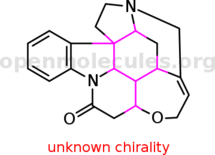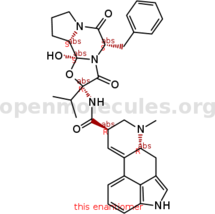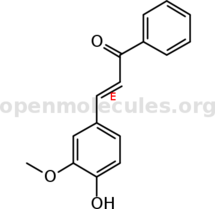<?php
/**
* SMILES image manager based on openmolecules.org name2structure
* service.
*
**/
if (!defined('IN_CODE')) {
header('HTTP/1.0 403 Forbidden');
exit("Not allowed to run this file directly.");
}
define("IMAGE_DIR", "/var/www/smiles/");
define("SMILES_IMG_LOC", "www.sciencemadness.org/smiles/");
define("OM_PREFIX", "http://n2s.openmolecules.org/?name=");
define("FAILURE_IMAGE", "smilesfailure.png");
class SmilesCode {
// convert SMILES to img representing corresponding structure
public function render($smiles) {
$smiles = trim($smiles);
$key = md5($smiles);
$image_name = $key . '.png';
$file_name = IMAGE_DIR . $image_name;
// image not stored locally -- try to generate image file
if (!file_exists($file_name)) {
$file_name = $this->generate_file($smiles, $image_name);
}
if (!empty($_SERVER['HTTPS']) && $_SERVER['HTTPS'] !== 'off') {
$protocol = 'https://';
}
else {
$protocol = 'http://';
}
$img_url = $protocol . SMILES_IMG_LOC . $image_name;
$img = "<img src=\"$img_url\"></img>";
return $img;
}
// generate an image file using the openmolecules.net server
public function generate_file($smiles, $image_name) {
$remote_url = OM_PREFIX . $smiles;
$http = curl_init($remote_url);
curl_setopt($http, CURLOPT_RETURNTRANSFER, 1);
$result = curl_exec($http);
$status = curl_getinfo($http, CURLINFO_HTTP_CODE);
curl_close($http);
if ($status != 200) {
$image_name = FAILURE_IMAGE;
}
else {
$out_name = IMAGE_DIR . $image_name;
file_put_contents($out_name, $result);
}
return $image_name;
}
// replace all bbcode SMILES with molecular images
public function bbcode_replace($message) {
$codes = $this->extract_smiles($message);
foreach ($codes as $code) {
$bare_smiles = str_replace(array('[smiles]', '[/smiles]'),
array(), $code);
$rendered = $this->render($bare_smiles);
$message = str_replace($code, $rendered, $message);
}
return $message;
}
// get all bbcode SMILES markup
public function extract_smiles($message) {
$codes = array();
$offset = 0;
$begin_tag = '[smiles]';
$end_tag = '[/smiles]';
$current_tag = $begin_tag;
while ($offset < strlen($message)) {
$old_pos = $offset;
$pos = strpos($message, $current_tag, $offset);
if ($pos === false) {
break;
}
else {
$offset = $pos;
}
// found begin -- switch to end search
if ($current_tag == $begin_tag) {
$current_tag = $end_tag;
}
// found end -- capture contents and switch back to begin search
else {
$smile = substr($message, $old_pos,
$pos - $old_pos + strlen($end_tag));
array_push($codes, $smile);
$current_tag = $begin_tag;
}
}
return $codes;
}
}
?>
|













 .
.






